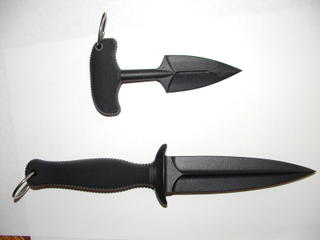 By Joel Persinger
By Joel PersingerYesterday, I had the opportunity to take a friend to the shooting range for a round of trap. It was his first experience trying to shoot flying orange clay targets out of the air with a shotgun (or anything else for that matter). But, it was something he had always wanted to do.
Now, if you’ve never shot trap… you should know that you stand at a station, load one round, yell “pull” and when the little clay “Frisbee” target flies out in front of your station you shoot it (or at least attempt to do so). If you ask me it’s the Girl Scout cookie of shooting. Nobody can start without wanting to do it again. But I digress.
As I was saying, I took a friend to the range who had never done this before. The range master and I went over the rules, explained the concept and demonstrated the functioning of my wife’s little Remington 11-87 20 gage semi-auto field gun (a sweet little shotgun if there ever was one). I shot the first round as a demonstration for him. He was blown away (pardon the pun) by the fact that I hit 20 out of 25 targets. What he didn’t know is that 20 out of 25 is kind of average at best if you’ve been doing it for a while, which I have.
After I shot the first round of 25 it was his turn. I went over the functioning of the weapon again and stood behind him as he took his first five shots at station one. Each shot was a clean miss and each time he was more disappointed and became more rigid in his stance. His grip on the gun might as well have been a death grip. With great determination on his face, he moved to station two.
At station too, I demonstrated a proper stance, mount of the gun, eye alignment and so on, then passed the weapon back to him. The puller was ready and away he went again. Five shots… five misses. He looked very disappointed and off we went to station three.
It was there at station three, that I suggested he take a few deep breaths and relax. “The gun isn’t going to jump out of your hand” I said, “just relax, follow the bird and squeeze the trigger as the muzzle passes through the target. Then follow though just as you would with your golf swing.” He breathed for what seem like a year, took up his stance, mounted the gun and shouted “PULL”…. “BAM” barked the little gun and “SMASH” went the target! “Good shot” I shouted… “do it again” and he did, eleven more times for a score of 12 out of 25. Not bad for the first time out.
So, why did I tell you this story on a martial arts blog? I told you because it is a lesson that teaches all of us a simple truth. We are all our own worst enemies. The more we fail the harder we try and the less we do. The moral of the story is; don’t “try”… “do”. When my friend stopped trying with all his might to force his will upon the situation and simply relaxed, he succeeded. Had he kept trying with all his might, he might not have hit a single clay.
In your practice this week, whether it’s hitting the bag, working through forms, sparing with friends or whatever form your practice takes, relax. Take your time, some deep breaths and relax. You’ll find that you are faster, stronger, more agile, more accurate and in general a better fighter if you stop trying so hard and just do it.





